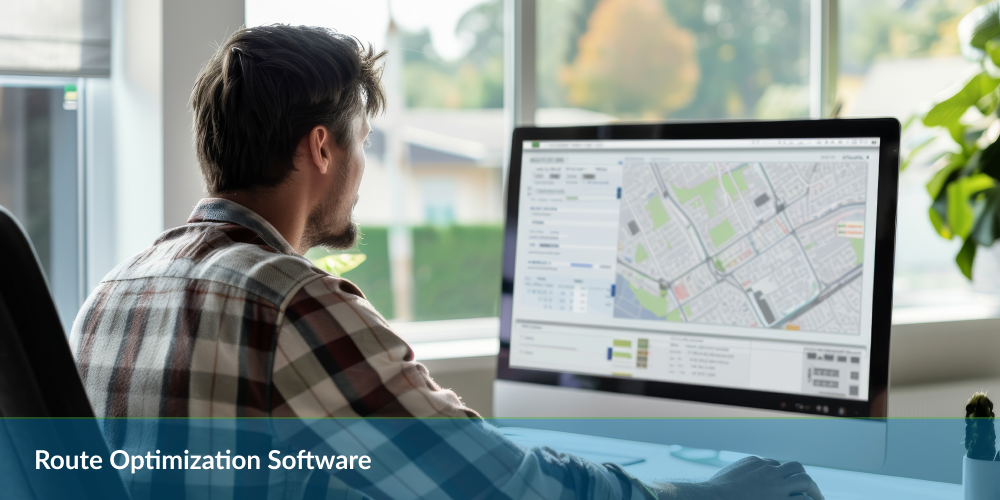Table of Contents
According to a report by MarketsandMarkets, the field force automation market is set to grow to $ 2.8 billion by 2024 at a CAGR of 18.2%. With the increase in at-home services post pandemic, field service companies are now looking for cloud-based, robust solutions to better manage their field forces in real-time.
This is due to the integration capabilities of field service management software. They can seamlessly integrate with existing CRM, FSM, and ERP systems to facilitate deployment of advanced field force automation features like:
- Automatic scheduling and dispatch
- Field staff attendance
- Mobile monitoring and tracking
- Real-time communication
And, with the constant development of new technologies, it is easier to process data quickly to understand the performance of business operations. Access to more data means having extended market knowledge and more advantages to leverage.
However, it is possible to lose sight of the bigger picture if you are bombarded with loads of data, which is especially true in the case of managing your field force teams. Truth be told, it is impossible to oversee your field service operatives’ major KPIs (Key Performance Indicators) if you fail to schedule their workload optimally.
KPIs are a defined set of metrics used to observe and evaluate the performance of different teams within an organization. For field service management, KPIs are based on various aspects of field service performance. These include:
- Team’s productivity in the field
- People involved in the process
- Experiences delivered to the customers
But as we move into the post-pandemic era of business, companies need to leave the reactive approach behind and embrace a proactive mechanism to keep the customer experiences at the apex of success metrics.
With that in mind, let’s look at some of the most important KPIs you need to consider when dealing with field force management for your organization.
Metric 1: First-Time Fix Rate
The first-time fix rate is the percentage of jobs completed successfully in the first attempt. What makes this KPI an important one is that it directly impacts your company’s costs and highlights your team’s performance.
If a technician completes a job in multiple visits, it is not a good sign, and you must identify the reasons behind the poor performance. Some prominent reasons for recurring visits include lack of inventory, a poor set of skills, or being unaware of what customers wants. Therefore, it is essential to measure this KPI closely to utilize your resource optimally.
Metric 2: Customer Experience Score
It is a fact that customers will continue to choose your brand if they are happy with your services. That is why tracking customer satisfaction is critical to building long-term associations with your customers.
Remember, to convert your customers into your brand ambassadors, you must nurture your associations by delivering experiences that exceeds their expectations. As a result, you will add significantly to your revenue and create a positive impact on your business’ bottom line.
Metric 3: Service Level Agreement (SLA) Compliance Rate
SLAs refer to a contract between field service providers and customers for a particular service. One of the prime examples is Dominos Pizza that offers pizza for free if it is not delivered in thirty minutes.
SLA compliance can have a significant impact on your brand’s reputation. If your field service team continues to fulfill the SLA contracts diligently, it will improve your brand value and lead to more revenue and higher profit margins. Thus, you need to create a planned approach to enhance your SLA compliance rate to stand a chance in the customer-oriented market.
Metric 4: Performance of Field Service Teams
Your field service teams are the troop in action and are responsible for delivering delightful customer experiences at all times. Therefore, you need to monitor this KPI regularly to know which team members are performing effectively and which ones are lagging.
You can identify the reasons behind poor performance and design training programs to remedy the issues. You can also leverage push notifications and real-time information sharing with the field staff to empower them in the field.
A robust field service management software can help you organize and manage the KPIs mentioned above by providing the field staff with vital customer data in a mobile app.
Master These KPIs With NetworkON
NetworkON is one of the fastest-growing field force management software with AI-powered route optimization capability. It integrates easily with your existing systems and helps you deliver delightful customer experiences from the get-go.
Some of the features that enhance your field service teams’ performance include:
- AI-based route optimization and geofencing capabilities to offer the best routes to your specialists in the field
- Automatic scheduling and dispatch
- Real-time tracking of your field service teams and their vehicles
- Push notifications to keep the field service agents and customers informed
- Digital receipts and proof of task completion
- Green technology that eliminates the need for paperwork for everyday tasks
- Reminders for vehicle maintenance
- Data analytics and reporting to get a clear picture of team’s performance both individually and collectively
Are you ready to introduce a new level of transparency in your field force management process? Let’s talk!
Get in touch with our subject matter experts today. You can email us at info@networkon.io or visit our website. In addition, you can learn more about the benefits of delivery management software from our blog section.





0 Conversations